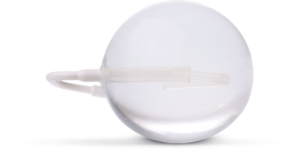There are many risks associated with clinical obesity. Some of these are more apparent than others. Common examples include hypertension (high blood pressure) diabetes, heart disease, and mobility-related issues. Others are less noticeable and potentially, just as insidious. One example is a condition known as obesity hypoventilation syndrome (OHS).
What does this illness entail? What are the primary signs and symptoms? How will a physician obtain an accurate diagnosis and might targeted treatments be able to help? These are some of the issues that we’ll be examining throughout this article.
Is Obesity Hypoventilation Syndrome a Restrictive Lung Disease?
This condition is sometimes classified as a restrictive lung disease due to its impact upon breathing. Obesity hypoventilation has also been referred to as “Pickwickian Syndrome” (a reference to a fictional character of Charles Dickens who exhibited many of the same symptoms). Either way, the potential impacts are very real.
Obesity hypoventilation results in a buildup of carbon dioxide within the bloodstream. As a result, the body tissues are not able to obtain the oxygen that they require to function properly. This is clinically referred to as hypercapnia.
OHS is caused by lungs that function at a less efficient rate when compared to normal individuals. This often results in shallow and slow breathing cycles. Interestingly enough, OHS impacts males more often than females and it is thought that black males are at a particularly high risk of developing this condition (if they are already obese).

Typical Signs and Symptoms
Now that we have obtained a basic overview of OHS, it is important to move on and discuss some of the most common symptoms. Here are a handful of indications that this condition may be present:
- Constant shortness of breath.
- Fatigue and sluggishness.
- Dizziness.
- Cold limbs and/or poor circulation.
It is also prudent to mention that OHS will frequently occur alongside other chronic illnesses. Obstructive sleep apnoea is a prime example. In other words, those who may have been previously diagnosed with sleep apnoea tend to be at a higher risk of developing obesity-hypoventilation syndrome. This is why sleep-related symptoms such as loud snoring or choking during the overnight hours will also be evaluated by a professional.
How is this Condition Diagnosed?
One of the first steps in determining if this condition is present involves a physician who calculates your body mass index (BMI). Readings above a certain level will signal that you are clinically obese. Assuming that this has been established, there are several other steps that are normally taken including (but not always limited to):
- Arterial blood gas.
- Pulse oximeter readings.
- An x-ray of your chest.
- Tests to measure your total lung capacity.
- Sleep studies (if applicable).
Note that testing positive for one variable does not necessarily signify that you are suffering from OHS. Clinicians will instead try to establish a commonality in order to obtain an accurate diagnosis.

Obesity Hypoventilation Syndrome Treatment Options
So, how can OHS be treated? Perhaps the most effective solution involves developing a targeted plan to lose weight (such as with the help of a gastric balloon). Many individuals will notice an improvement in their symptoms when they begin to lower their body mass index.
There may also be times when breathing assistance is required while at rest. The use of a CPAP (continuous positive airway pressure) machine is a common option that many doctors will recommend. Once again, this depends on the severity of your symptoms as well as if they are possibly linked to obstructive sleep apnoea.
In very rare cases when surgical intervention is needed, a physician may elect to perform a tracheostomy. This involves cutting a small hole in your neck so that you can breathe freely. However, note that lifestyle changes will normally help to alleviate the effects of OHS.
Thankfully, non-surgical treatments such as the use of the Spatz3 adjustable gastric balloon will enable you to lose weight by lowering your appetite as well as limiting the amount of food that you can consume at any given time. When combined with positive lifestyle modifications, the chances are high that you will experience dramatic changes. It is still a good idea to speak with your primary care physician to learn more about obesity hypoventilation as well as your options.


